#tulagi
Text
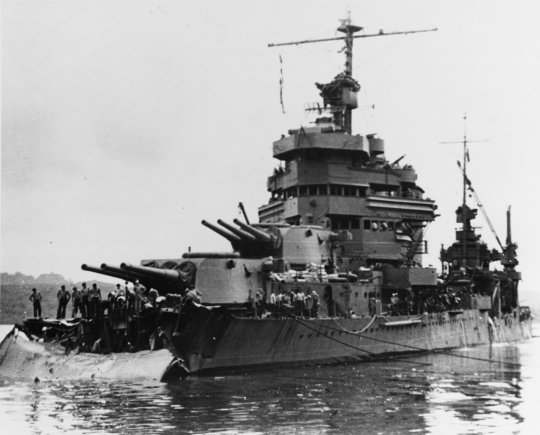
Le croiseur lourd USS Minneapolis (CA-36) suite à une torpille reçue à la proue du navire la nuit précédente lors de la bataille navale de Tassafaronga – Campagne de Guadalcanal – Campagne des îles Salomon – Guerre du Pacifique – Tulagi – Iles Salomon – 1er décembre 1942
Photographe : Official U.S. Navy Photograph
©Naval History and Heritage Command - 80-G-211215
#WWII#guerre du pacific#pacific war#bataille de tassafaronga#battle of tassafaronga#campagne de guadalcanal#guadalcanal campaign#campagne des îles Salomon#solomon islands campaign#marine américaine#us navy#marine militaire#military navy#marine de guerre#navy#croiseur#cruiser#croiseur lourd#heavy cruiser#classe new orleans#new orleans-class#uss minneapolis (ca-36)#uss minneapolis#ca-36#tulagi#iles salomon#solomon islands#01/12/1942#12/1942#1942
21 notes
·
View notes
Text
Remember the Battle of Tulagi and Gavutu–Tanambogo: August 1942.

During the Guadalcanal campaign from August 1942 to February 1943, the Battle of Tulagi and Gavutu-Tanambogo—all small islands in the Solomons—became a grim prelude to the fierce island-hopping battles ahead. While the Allied land forces fighting on nearby Guadalcanal faced much less resistance, U.S. forces on these other three islands were met by an outnumbered Japanese force that fought to protect the island to the last man.
This fierce, almost suicidal Japanese resistance was common throughout the rest of the war in the Pacific, and Americans got their first taste of it on the remote island of Tulagi.
[Up Next: Japan is Building the Biggest Warships in Asia]
#Battle of Tulagi#Guadalcanal campaign#solomon islands#Allied land forces#U.S. forces and soldiers#imperial japanese army#Japanese force#chronology#second world war
3 notes
·
View notes
Text
1942-The Battle of the Coral Sea begins

On 4 May, from a position 100 nmi (120 mi; 190 km) south of Guadalcanal (11°10′S 158°49′E), a total of 60 aircraft from TF 17 launched three consecutive strikes against Shima's forces off Tulagi. Yorktown's aircraft surprised Shima's ships and sank the destroyer Kikuzuki (09°07′S 160°12′E) and three of the minesweepers, damaged four other ships, and destroyed four seaplanes which were supporting the landings.
0 notes
Text

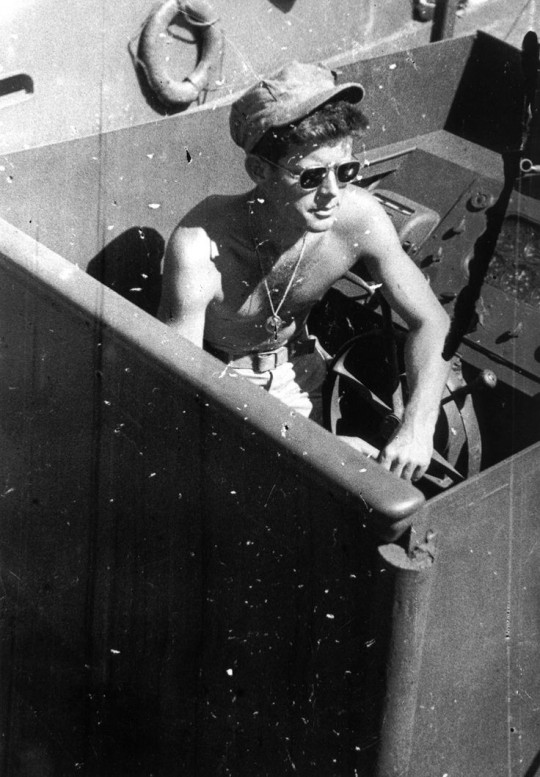
John F. Kennedy abroad the PT-109, Tulagi, Solomon Islands, 1943.
65 notes
·
View notes
Text
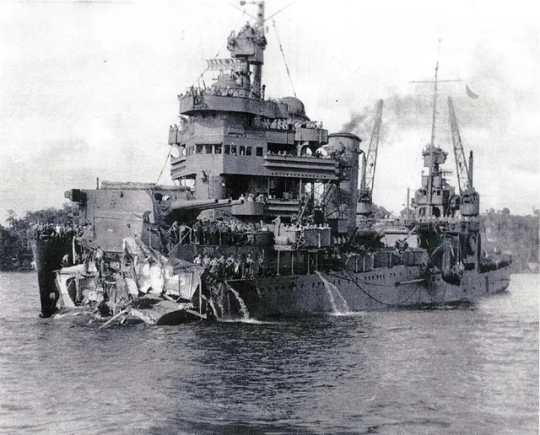
USS New Orleans arriving in Tulagi Harbor, Solomon Islands, 1 Dec 1942. The night before, New Orleans was struck by a torpedo in the Battle of Tassafaronga that blew off 150 feet of her bow
#Battle of Tassafaronga#battle of guadalcanal#solomon islands campaign#pacific theater#december#wwii#naval
24 notes
·
View notes
Text

Photograph of the USS Tulagi (CVE-72) at Gould Island outside Boston Harbor, 8/16/1944 USN Image
39 notes
·
View notes
Text
In my eyes, Phillip is either a massive car nut or an avi history nerd. And he's really quick with answers too
Alejandro randomly, on his phone: "What island did the Japanese set up a seaplane base in during the Battle of the Coral Sea?"
Phillip, briefly looking up: "Tulagi port in the Solomons."
30 notes
·
View notes
Photo
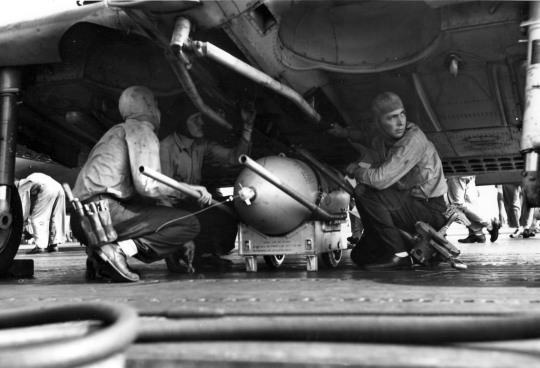
https://pacificeagles.net/the-guadalcanal-landings/
The Guadalcanal Landings
As the largest invasion fleet assembled so far in the war approached Guadalcanal to begin the landing operations, the first order of business for VAdm Frank J. Fletcher’s Task Force 61 was to clear the immediate area of air opposition, and then to assist with the softening up of the beaches. At 0530 the first wave of 93 aircraft took off to attack the landing areas, including no less than 44 fighters for strafing and air cover. Taking off in the pre-dawn darkness many of the pilots got lost and failed to join up with their formations, so it was a rather disjointed force that made its way to Guadalcanal and Tulagi.
Fighters from Wasp’s VF-71, eleven in all, swept in low towards the seaplane base at Tulagi. A unit of H6K flying boats from the Yokohama Kokutai was caught on the water preparing to take off for dawn searches, and a unit of A6M2-N floatplane Zeros was also unprepared. All the aircraft were quickly flamed by the Americans, seven H6Ks and six Zeros in all. Several supporting boats and shore installations were also burned, removing any chance that the Tulagi unit could interfere with the landings. SBDs from Wasp followed up these attacks by dropping bombs on various shore installations, all without encountering any serious anti-aircraft fire.
At Guadalcanal the Saratoga Air Group took the lead. The Lunga Point airfield was approaching completion, but 12 VF-5 fighters strafed every likely target, including the “pagoda” and several hangars. There was no return fire from anti-aircraft guns, even though several guns were in position around the airfield. There were even two Type 11 radar sets, but these were apparently not operating that morning having failed to provide any warning. 26 SBDs followed up the strafing attack by bombing structures around the airfield. The attack caused Japanese troops and construction crews around the field to flee for the hills, and the airfield was captured without incident two days after the marines came ashore. All bombing missions were halted after midday as the operation was proceeding well – the Guadalcanal landings were unopposed, and the marines on Tulagi had the situation well in hand despite heavy fighting.
Tanambogo after being bombed by Wasp aircraft
Afternoon Air Attacks
At Vunakanau airfield near Rabaul, the 4th Kokutai was preparing for a mission of its own when news of the American landings arrived. The 4th was slated to attack a newly discovered Allied airfield at Rabi, on the eastern tip of New Guinea and 27 G4Ms were bombed up and ready to depart when the new threat became evident. RAdm Sadayoshi Yamada, commander of the 5th Base Air Force, elected to send these bombers to Guadalcanal instead, judging that the new landings were a more significant threat. Keen to strike early, Yamada ordered the 4th to attack with bombs instead of re-arming them with potentially more deadly torpedoes. The Tainan Kokutai was to supply 18 Zeros as escort, even though Guadalcanal was at the extreme limit of the Zero’s range – well over 500 miles from Rabaul. At about 10am, just 90 minutes after news of the American invasion had arrived, the 4th and Tainan Kokutai were on their way to Guadalcanal.
Even though no land-based radar was yet operational at Lunga, the Allied intelligence network provided early warning of the incoming strike. Coastwatcher Paul Mason, stationed near Buin in southern Bougainville, radioed “24 bombers headed yours” to Turner and Fletcher at around midday when he spotted the 4th Ku bombers at high altitude. The message arrived in plenty of time but there were nevertheless difficulties in preparing a defensive effort.
News of the incoming Japanese air attack was no real surprise, but the tactical situation meant that the Americans had to plan the defence carefully. Fletcher’s fighters had to defend two locations, about 60 miles apart – his own carriers and Turner’s landing force. Wildcats had to be kept on station to protect both locations, which were not mutually supporting. This placed an enormous burden on the three fighter squadrons and the Fighter Direction Officers responsible for their deployment. As the FDOs struggled to make sense of the likely attack direction, fighters were dispatched as either “CV CAP” for the carriers or “Screen CAP” (SCAP) for Lunga, with the carriers taking priority. Matters were not helped by the F4F’s short endurance, which meant that the CAPs had to be replaced regularly with fresh, fully fuelled fighters. Consequently, when the Japanese finally arrived over Guadalcanal there were just 8 SCAP F4Fs from Saratoga’s VF-5 on station.
Four of the Wildcats were led by Lt James Southerland. The FDO aboard the cruiser Chicago vectored his flight towards the incoming Japanese who were at the time inside a large cloud bank and out of sight. When the G4Ms burst out of the cloud bank Southerland’s fighters were just a few hundred yards away and he immediately led them into the attack, but the escorting Zeroes were equally alert and two F4Fs were shot down immediately, leaving Southerland to attack alone. He shot down one of the bombers and damaged another, before return fire damaged his fighter requiring him to break off. The second flight of Wildcats also made attacks on the bombers but without apparent success.
The remaining bombers arrived over Turner’s fleet and commenced bombing. Their aim was poor, and the bombs landed between transports and cruisers, but hit nothing – nevertheless the bombardiers claimed a destroyer sunk and transport damaged. Immediately afterwards the American fighters returned and damaged more of the G4Ms forcing a response from the escorts which resulted in two more F4Fs being shot down. The remaining Wildcats, some of them damaged, turned for home. Southerland was ambushed by more Zeros, culminating in a famous dogfight with the renowned Japanese ace PO1c Saburo Sakai who poured fire into Wildcat. Southerland was finally forced to bail out of his battered fighter and make his way towards the American lines. In all 5 of the 8 VF-5 Wildcats were shot down.
Sakai meanwhile followed up by attacking a nearby formation of SBDs. Making a poorly executed stern attack, Sakai was severely injured by the defensive guns of the dive-bombers – a bullet hit his skull and blinded him on one eye. Despite this severe wound, Sakai was able to maintain control of his Zero and set course for home. Battling blood loss and partial blindness, Sakai managed to fly the 550 miles home to Rabaul and land safely. He was evacuated back to Japan to recuperate but would fly again despite the loss of his eye.
Whilst the VF-5 Wildcats were fighting for their lives, 10 more F4Fs from VF-6 and eight from VF-71 attempted to intervene. Four VF-6 fighters under Lt Vincent de Poix were first to arrive as the bombers were beginning their withdrawal towards Santa Isabel Island. They made one firing pass on the formation of G4Ms before the escort was able to react, but soon the Zeros shot down one of the F4Fs and forced the others to scatter. The remaining six VF-6 fighters under Lt(jg) Gordon Firebaugh caught up with the bombers almost at the extreme range of their F4Fs. The Tainan fighters, now about 16 in number, again put up an excellent defence of the bombers, quickly shooting one Wildcat down. Firebaugh claimed two of the Zeroes whilst his charges finished off two more bombers, but Firebaugh was himself forced to bail out of his badly damaged fighter. The VF-71 fighters did not arrive in time to fight the Japanese.
In the defence of the invasion fleet half of the American fighters that were engaged were lost, 9 Wildcats in total. They managed to shoot down four bombers and two Zeroes, with two more G4Ms written off due to battle damage.
The Japanese launched one more attack on the 7th by nine D3A dive bombers. These aircraft lacked the fuel to fly from Rabaul to Guadalcanal and return, so it was planned that they would ditch near Shortland harbour on the return leg. These dive bombers only carried small 60kg bombs so it was doubtful they could do much damage to enemy warships. They arrived near Lunga almost an hour after the G4Ms left and attacked without escort. They scored a hit on the destroyer Mugford that killed 21 men. Five of the D3As were shot down by fighters and American AA fire, and the remaining four ditched at Shortland as planned.
To cap off a busy day of air operations, the US Fifth Air Force got into the action when it launched a raid by heavy bombers on Vunakanau airfield. 13 B-17s from the 19th Bomb Group took off from Port Moresby as the 4th Kokutai was busy attacking Guadalcanal, and they reported bombing the airfield despite strong fighter opposition from the 2nd Kokutai’s Zero 32s which caused the loss of one Fortress. No Japanese aircraft were destroyed on the ground by Gen George C. Kenney, commander of the Fifth, claimed based on faulty intelligence that his bombers had destroyed 75 planes “parked wingtip to wingtip” at Vunakunau.
Photo Album
D Plus One
The following day RAdm Yamada was determined to find the enemy carriers and attack them. Five reconnaissance aircraft were launched followed an hour later by 26 torpedo-armed bombers from the 4th and Misawa Kokutai and 15 Zeros. When the search planes failed to report any American carriers in the vicinity, the strike group set course for Tulagi and the transport fleet. Due to communications foul-ups and fuel worries, there were only three F4Fs on station over Savo Sound although 14 more were hurrying north to join them. Task Force 62 would have to rely primarily on its own anti-aircraft guns to repel the attack.
Japanese bombers skimming at low level as they attack Allied shipping off Guadalcanal
The Japanese bombers had flown at low altitude north of the Solomons to shield themselves from American radar. As a result, they were first sighted visually just before midday by lookouts. AA guns quickly swung into action and opened up as the G4Ms descended to low level to begin their torpedo attack, whilst TF62 turned away. Almost immediately bombers began to crash in flames as the American gunners found their targets, some of the wrecks barely missing ships as they splashed. One G4M smashed into the transport George F. Elliot and started a large fire. She was later beached and, beyond saving, was allowed to burn out. Very few torpedoes appear to have been launched and the only ship that was hit by a ‘fish’ was the destroyer Jarvis. She was struck forward near her bow and immediately started to take on water.
The three F4Fs on patrol responded to radio calls for help and dived from high altitude down to the deck. There they came across several bombers making their escape at low level, and quickly shot down four of them as well as one of the escorting Zeros, which was itself distracted by a cruiser based SOC in the area.
The attack was disastrous for the 4th and Misawa Kokutai. Seventeen Type 1 bombers were destroyed in the attack, and another crashed after having aborted early. In return they had managed to damage a transport and a destroyer but had otherwise nothing to show for their efforts despite hysterical claims of dozens of cruisers and transports sunk or damaged. It was the worst single day loss of Japanese bombers during the entire Guadalcanal campaign and highlighted the extreme vulnerability of the G4M to American firepower.
George F. Elliot burns after being hit by a crashing Japanese bomber. Two other plumes are destroyed aircraft burning on the water.
Following the successful defence of TF62, Fletcher reviewed his aircraft situation. During two days of operations his carriers had lost 21 fighters to enemy action and operational accidents, more than 20% of his total strength. Aware that Rabaul-based aircraft posed a serious threat to his carriers and that Japanese submarines were likely hunting for TF61, Fletcher determined that it was too dangerous to remain in the area and requested permission from Ghormley to withdraw early. At the time of making his request he believed that TF62 would shortly make its own withdrawal, but the Japanese attacks had disrupted unloading operations and Turner had elected to keep his ships in the area longer to give the marines more time to unload their supplies and equipment. Overnight Fletcher had TF61 sail southeast, away from Guadalcanal, but still within range to support Turner should the need arise. The Japanese had other plans. Their 8th Fleet, a powerful force of heavy cruisers under the command of VAdm Gunichi Mikawa, was rapidly concentrated at Rabaul and made ready to sail for Guadalcanal. The stage was set for the US Navy’s worst ever disaster.
0 notes
Text
Events 5.4 (before 1950)
1256 – The Augustinian monastic order is constituted at the Lecceto Monastery when Pope Alexander IV issues a papal bull Licet ecclesiae catholicae.
1415 – Religious reformers John Wycliffe and Jan Hus are condemned as heretics at the Council of Constance.
1436 – Assassination of the Swedish rebel (later national hero) Engelbrekt Engelbrektsson
1471 – Wars of the Roses: The Battle of Tewkesbury: Edward IV defeats a Lancastrian Army and kills Edward of Westminster, Prince of Wales.
1493 – Pope Alexander VI divides the New World between Spain and Portugal along the Line of Demarcation.
1626 – Dutch explorer Peter Minuit arrives in New Netherland (present day Manhattan Island) aboard the See Meeuw.
1686 – The Municipality of Ilagan is founded in the Philippines.
1738 – The Imperial Theatrical School, now known as Vaganova Academy of Russian Ballet, was founded under the reign of Empress Anna. It is the first ballet school in Russia and second in the world.
1776 – Rhode Island becomes the first American colony to renounce allegiance to King George III.
1799 – Fourth Anglo-Mysore War: The Battle of Seringapatam: The siege of Seringapatam ends when the city is invaded and Tipu Sultan killed by the besieging British army, under the command of General George Harris.
1814 – Emperor Napoleon arrives at Portoferraio on the island of Elba to begin his exile.
1814 – King Ferdinand VII abolishes the Spanish Constitution of 1812, returning Spain to absolutism.
1836 – Formation of Ancient Order of Hibernians
1859 – The Cornwall Railway opens across the Royal Albert Bridge linking Devon and Cornwall in England.
1869 – The Naval Battle of Hakodate is fought in Japan.
1871 – The National Association, the first professional baseball league, opens its first season in Fort Wayne, Indiana.
1886 – Haymarket affair: In Chicago, United States, a homemade bomb is thrown at police officers trying to break up a labor rally, killing one officer. Ensuing gunfire leads to the deaths of a further seven officers and four civilians.
1904 – The United States begins construction of the Panama Canal.
1910 – The Royal Canadian Navy is created.
1912 – Italy occupies the Ottoman island of Rhodes.
1919 – May Fourth Movement: Student demonstrations take place in Tiananmen Square in Beijing, China, protesting the Treaty of Versailles, which transferred Chinese territory to Japan.
1926 – The United Kingdom general strike begins.
1927 – The Academy of Motion Picture Arts and Sciences is incorporated.
1932 – In Atlanta, mobster Al Capone begins serving an eleven-year prison sentence for tax evasion.
1942 – World War II: The Battle of the Coral Sea begins with an attack by aircraft from the United States aircraft carrier USS Yorktown on Japanese naval forces at Tulagi Island in the Solomon Islands. The Japanese forces had invaded Tulagi the day before.
1945 – World War II: Neuengamme concentration camp near Hamburg is liberated by the British Army.
1945 – World War II: The German surrender at Lüneburg Heath is signed, coming into effect the following day. It encompasses all Wehrmacht units in the Netherlands, Denmark and northwest Germany.
1946 – In San Francisco Bay, U.S. Marines from the nearby Treasure Island Naval Base stop a two-day riot at Alcatraz Federal Penitentiary. Five people are killed in the riot.
1949 – The entire Torino football team (except for two players who did not take the trip: Sauro Tomà, due to an injury and Renato Gandolfi, because of coach request) is killed in a plane crash.
0 notes
Text
Pacific War 19 – Battle of Tassafaronga
Americans were receiving increasing amounts of reinforcements. Air base on Guadalcanal already had 124 aircraft available, and additional runways had been built. In the Tulagi bay were the mothership and 15 torpedo boats which were highly effective in night attacks. Modern battleship North Carolina had returned from repairs, and her sister ship Indiana had also arrived to the area of operations,…
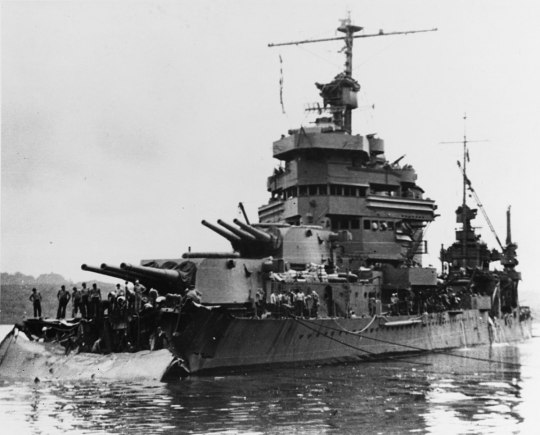
View On WordPress
0 notes
Text
RNZ Pacific 1309 23 Feb 2023
7390Khz 1259 23 FEB 2023 - RNZ PACIFIC (NEW ZEALAND) in ENGLISH from RANGITAIKI. SINPO = 55434. English, s/on w/bellbird int. until pips and news @1300z anchored by Don Wiseman. The head of the University of the South Pacific's journalism program says there are concerns about an ongoing review of Fiji's repressive media laws but they are giving the new coalition government the benefit of the doubt. Hundreds of cases of tuberculosis in Kiribati some of them with drug resistant strains. A new TB ward opened in the hospital for isolating drug resistant cases. Fiji's Prime Minister Sitiveni Rabuka is the first Fijian leader in 16 years to hold a one-on-one meeting with the head of the United Liberation Movement for West Papua, while also confirming his government will support the independence campaigners bid to become full members of the Melanesian Spearhead Group. There's still no sign of the four fishermen who have been missing since leaving Port Moresby over two weeks ago. The 5th Pacific Islands Forum Special Leaders Retreat, labelled as a significant milestone, began in the tourism hotspot, Denarau Island, near Nadi, on Thursday morning. Kiribati, which announced its withdrawal from PIF last year, is back in the fold and the Micronesian nation's return to the Forum family is a key focus of the special meeting. Police in Solomon Islands are hunting for a crocodile that attacked a man in Central Province. Police said the victim was attacked while diving along the seafront of the provincial capital Tulagi. He escaped but sustained serious head injuries and scratches to his chest and back. Vanuatu PM Kalsakau has asked the Australian Government to revisit the seasonal workers programme to find out what the issues are that prompt them to go underground. One complaint is that some farmers do not honour the contracts they have signed, especially over wages. Asiana Airlines will suspend all Northern Mariana Islands flights from March 4. NZ Health advocates want employment protections and better medical guidance for people suffering from Long Covid. @1308z "Pacific Waves" anchored by Koroi Hawkins. Backyard fence antenna, Etón e1XM. 100kW, beamAz 35°, bearing 240°. Received at Plymouth, United States, 12912KM from transmitter at Rangitaiki. Local time: 0659.
1 note
·
View note
Photo

The last minutes of the USS Yorktown which was sunk on 7th June 1942. USS Yorktown (CV-5) was an aircraft carrier that served in the United States Navy during World War II. Commissioned in 1937, she saw action at New Guinea, the Invasion of Tulagi and the Battle of the Coral Sea. The damage the ship had sustained after Coral Sea was considerable yet repair workers at Pearl Harbor laboured around the clock and patched her up enough so that she was able to be put to sea again in 48 hours. The Yorktown played an important part in the Battle of Midway and her aircraft played crucial roles in sinking two Japanese fleet carriers. Yorktown also absorbed both Japanese aerial counterattacks at Midway which otherwise would have been directed at the carriers USS Enterprise and Hornet. On 4 June, Japanese aircraft managed to cripple the Yorktown. She lost all power and developed a 23-degree list to port. Salvage efforts on Yorktown were encouraging, but on the afternoon of 6 June, the Japanese submarine I-168 fired a salvo of torpedoes, two of which struck Yorktown, and a third sinking the destroyer USS Hammann, which had been providing auxiliary power to Yorktown. With further salvage efforts deemed hopeless, the remaining repair crews were evacuated from Yorktown, which sank on the morning of 7 June. Collection of The National WWII Museum #secondworldwar #ww2 #worldwartwo #worldwar2 #war #history #militaryhistory #military #colourised #colorized #colourisedhistory #colorizedhistory #color #colour #colorizedhistoricalphotos #colorization #colourisation #retro #goodolddays #classic #goldenoldies #colorizedphoto #colourisedphoto #midway #pacificwar #usnavy #yorktown https://www.instagram.com/p/Ck9WttZKDXm/?igshid=NGJjMDIxMWI=
#secondworldwar#ww2#worldwartwo#worldwar2#war#history#militaryhistory#military#colourised#colorized#colourisedhistory#colorizedhistory#color#colour#colorizedhistoricalphotos#colorization#colourisation#retro#goodolddays#classic#goldenoldies#colorizedphoto#colourisedphoto#midway#pacificwar#usnavy#yorktown
0 notes
Photo

I never would’ve guessed Don Adams (aka “Maxwell Smart”) was a badass Marine. Born Donald James Yarmy. Late in 1941 he joined the United States Marine Corps. Yarmy reported to the First Training Battalion in New River, North Carolina, and then was assigned to I Company of the Third Battalion, Eighth Marines in San Diego. In May 1942, Yarmy's unit was transported to Samoa for further training, and then participated in the Battle of Guadalcanal in August 1942 in the Pacific Theater of Operations. During an assault on the Japanese naval base at the nearby island of Tulagi, which was fiercely defended, Yarmy was seriously wounded by a Japanese sniper. He subsequently contracted blackwater fever, a serious complication of malaria, known for a 90% rate of fatality, and his recovery was hampered by horrendous conditions in the battlefield. He did not expect to recover. Yarmy was evacuated and then hospitalized for more than a year at a Navy hospital in Wellington, New Zealand. He was awarded the Purple Heart. After his recovery, Yarmy served as a Marine Drill Instructor in the United States, holding the rank of corporal. He was as an expert marksman and was noted for his competence. https://www.instagram.com/p/Chm_CVmp5Yr/?igshid=NGJjMDIxMWI=
0 notes
Text
1942-Invade Tulagi Island
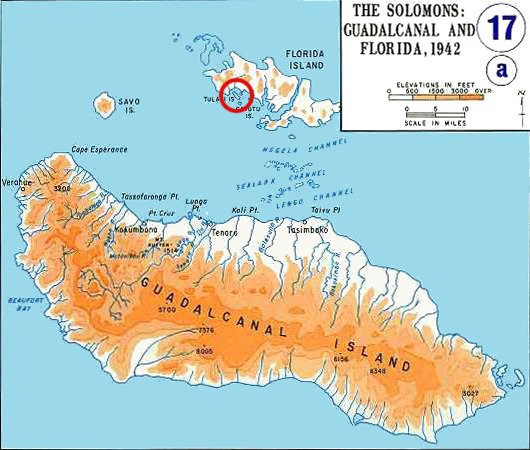
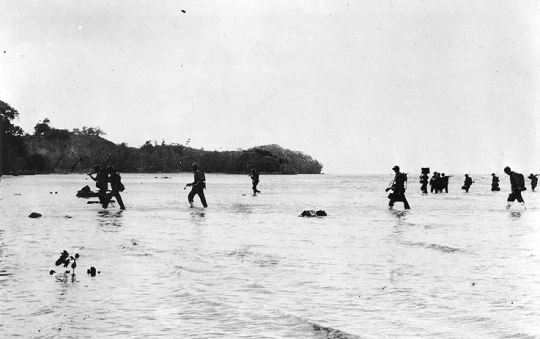
The invasion of Tulagi, on 3–4 May 1942, was part of Operation Mo, the Empire of Japan's strategy in the South Pacific and South West Pacific Area in 1942.
#May.3.1942#Invasion of Tulagi#Solomon Islands#Operation Mo#Battle of the Coral Sea#Pacific War#history today#WWⅡ
0 notes
Text
Today's selected anniversaries: 7th August 2022
1461:
Ming Chinese general Cao Qin staged a failed coup against the
Tianshun Emperor.
https://en.wikipedia.org/wiki/Rebellion_of_Cao_Qin
1914:
The Battle of Mulhouse began with France's first attack of
World War I in an ultimately unsuccessful attempt to recover the region
of Alsace from Germany.
https://en.wikipedia.org/wiki/Battle_of_Mulhouse
1942:
World War II: U.S. Marines initiated the first American
offensive of the Guadalcanal campaign, with landings on Tulagi,
Gavutu–Tanambogo and Guadalcanal in the Solomon Islands.
https://en.wikipedia.org/wiki/Battle_of_Tulagi_and_Gavutu%E2%80%93Tanambogo
1985:
Five members of the Bamber family were found murdered at a
farmhouse in Tolleshunt D'Arcy, England.
https://en.wikipedia.org/wiki/White_House_Farm_murders
0 notes
Text

US Navy destroyer USS Selfridge (DD-357) arriving at Mare Island Naval Shipyard, California, 24 January 1944. She lost her bow after a torpedo hit during the Battle of Vella Lavella. A temporary bow was fitted at Tulagi and Noumea so that she could reach the U.S. for permanent repairs.
19 notes
·
View notes